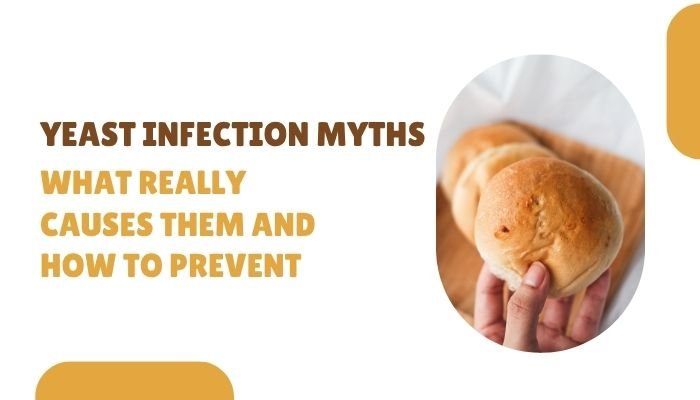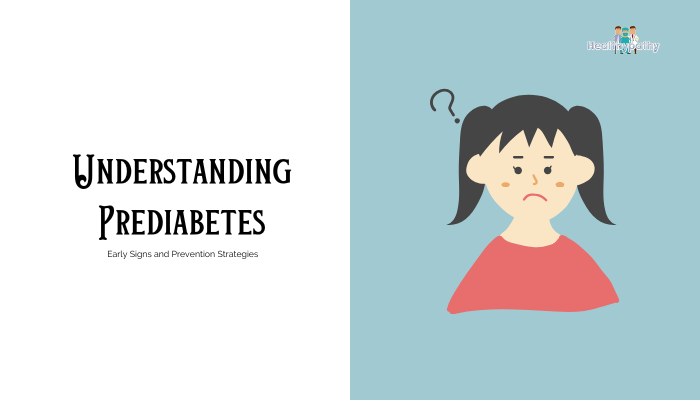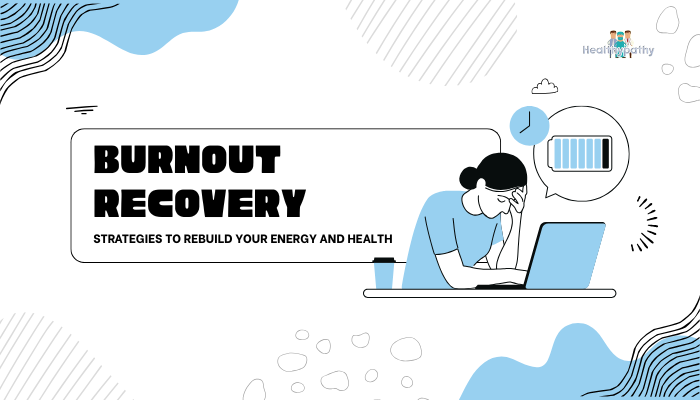Introduction
Yeast infections—most commonly caused by the fungus Candida albicans—are a frequent nuisance many women face. Although not typically dangerous, they can create plenty of discomfort: itching, burning, and irritation. Yet, there’s a lot of misinformation circulating about what triggers yeast infections and how to keep them at bay. Some myths portray them as purely a hygiene problem or a direct result of sexual activity, while others downplay potential contributors like diet or antibiotic use.
In reality, yeast infections can arise from multiple factors—both internal and external. Understanding these real causes and dismissing the myths can help you prevent recurrent issues. Let’s set the record straight on common misconceptions, explore what truly drives yeast overgrowth, and reveal science-backed prevention strategies to maintain vaginal health.
Yeast Infections 101
How They Form
The vagina hosts a balance of microorganisms—including bacteria and yeast—that typically coexist without causing problems. When something disturbs this equilibrium, Candida can multiply, triggering an infection. Key disruptive elements can include antibiotic use (killing beneficial bacteria), hormonal fluctuations, diabetes, or immune system changes. Certain lifestyle factors can also set the stage for yeast overgrowth.
Common Symptoms
If you experience:
- Intense Itching around the vaginal area
- Thick, White Discharge (often compared to cottage cheese)
- Burning Sensation during urination or intercourse
- Redness and Irritation around the vulva
…these are typical signs of a yeast infection. Mild infections sometimes clear on their own, but many women opt for over-the-counter or prescription antifungal treatments for quick relief.
Dispel the Myths – Real Causes and Prevention
Myth #1: Poor Hygiene Is the Main Culprit
Reality: Yeast infections don’t come from “being dirty.” In fact, overzealous washing, especially with harsh soaps or douches, can disrupt the vagina’s natural pH and beneficial bacteria. Avoiding heavily scented washes or frequent douching helps preserve the normal microbial balance that wards off yeast overgrowth.
Prevention Tip: Use gentle, unscented soaps around the external vulva only—never inside the vagina—and pat dry gently to avoid lingering moisture.
Myth #2: They’re Always Sexually Transmitted
Reality: While yeast infections can sometimes pass between sexual partners, they’re not classified as sexually transmitted infections (STIs). Plenty of women get yeast infections without any sexual contact. Sexual friction can, however, irritate tissue and predispose the area to infection if other factors are present.
Prevention Tip: Wear breathable underwear, especially if prone to yeast infections after intercourse. Some women find it helpful to urinate and then wash gently after sex to reduce irritation or residue.
Myth #3: Sugar Doesn’t Matter
Reality: A diet consistently high in sugar can raise blood glucose levels, potentially fueling yeast growth. This is particularly relevant for those with poorly controlled diabetes, where high glucose in bodily fluids fosters an environment yeast find favorable.
Prevention Tip: Moderating sugar intake may lessen frequent infections. Maintain balanced meals, and if you have diabetes, work with your healthcare provider to control blood sugar effectively.
Myth #4: Tight Clothes Have No Impact
Reality: Tight-fitting clothing, especially non-breathable fabrics (like certain synthetic leggings or underwear), traps heat and moisture, giving yeast the damp environment it loves. Although wearing yoga pants or skinny jeans occasionally might not be a major problem, consistent daily use can tip the balance.
Prevention Tip: Opt for cotton underwear and choose looser cuts when possible, or at least vary your wardrobe to let the area breathe.
Myth #5: One Yeast Infection Cure Works for All
Reality: Over-the-counter antifungal creams or suppositories typically handle mild to moderate infections, but severe or recurrent infections sometimes need prescription-strength medications—oral antifungals or longer treatment courses. If you’re experiencing repeated infections that keep returning after self-treatment, you may need a doctor’s evaluation for underlying issues or an alternate strain of yeast.
Prevention Tip: Resist the urge to self-diagnose every vaginal itch as a yeast infection. Conditions like bacterial vaginosis or STIs can present similarly. Seek testing if symptoms persist or worsen.
Myth #6: Probiotics Are a Guaranteed Fix
Reality: While some women find that consuming probiotics (either through supplements or foods like yogurt and kefir) helps maintain a healthy vaginal microbiome, results vary. Probiotics alone aren’t a proven cure-all for ongoing yeast troubles. They can be beneficial as part of a holistic approach but rarely act as a silver bullet.
Prevention Tip: If you enjoy fermented foods or want a probiotic supplement, choose reputable brands with strains specifically studied for women’s health. Combine them with good hygiene and other preventive measures for the best results.
Additional Factors and Prevention Strategies
Medications and Medical Conditions
- Antibiotics: Broad-spectrum antibiotics can wipe out beneficial Lactobacillus bacteria, enabling yeast to flourish. When necessary, ask your doctor about using probiotics or antifungal prevention if you’re prone to yeast infections.
- Birth Control Pills or Hormone Therapy: Some women experience more frequent yeast infections on estrogen-based contraceptives or hormone treatments. If this happens, consider discussing alternatives with your healthcare professional.
- Immune Suppression: Chronic conditions (like HIV) or immunosuppressive therapies (e.g., steroids) may heighten the risk of yeast infections. Extra vigilance in noticing early symptoms is essential.
Stress and Sleep
An often-overlooked aspect is stress. High cortisol levels can disrupt the immune system’s equilibrium, raising vulnerability to infections, including yeast overgrowth. Adequate sleep fosters better immune responses and stable hormone levels, lowering infection risk.
Menstrual Hygiene
During menstruation, the pH in your vagina changes. While tampons or pads themselves don’t directly cause yeast infections, changing them frequently is wise to prevent excess moisture and irritation. If you develop recurrent infections around your period, talk to your doctor about protective measures or prophylactic antifungals during that time.
Seeking Medical Attention and Treatment
When to See a Doctor
- First-Time Infection: If you’re unsure about the diagnosis or the symptoms are severe.
- Recurring Episodes (4+ Times a Year): Could indicate an underlying condition or a resistant yeast strain.
- No Improvement After OTC Treatment: You might need prescription meds or a different approach.
Treatment Options
- Over-the-Counter Antifungals: Creams or suppositories containing miconazole or clotrimazole for mild cases.
- Oral Antifungals (Fluconazole): A single dose or multiple doses over days for stubborn infections.
- Chronic Suppressive Therapy: In women with recurrent infections, a longer course or weekly medication might stave off frequent recurrences.
Follow-Up
If you continue to have symptoms after completing treatment, get re-evaluated. Occasionally, you might be dealing with a non-albicans strain of yeast or misdiagnosis, in which case further lab tests and different antifungals or bacterial infection checks are necessary.
Conclusion
While yeast infections are common and often easily treated, persistent or recurring infections can become a frustrating cycle. Debunking myths and focusing on genuine causes—like antibiotic use, hormonal influences, clothing, and more—helps you adopt more effective preventative measures. Simple strategies, such as balancing sugar intake, choosing breathable underwear, and practicing healthy hygiene habits, can substantially reduce infection frequency.
If you find yourself repeatedly dealing with yeast infections despite consistent prevention efforts, consult a healthcare professional. With the right blend of medical treatment, lifestyle adjustments, and awareness, you can maintain a balanced vaginal ecosystem and minimize the discomfort of recurring yeast infections.
References
- https://www.cdc.gov.
- Sobel JD, et al. Vulvovaginal candidiasis. Lancet. 2019;393(10179):1834–1846.
- American College of Obstetricians and Gynecologists (ACOG). FAQ on Vaginitis: Yeast infections. 2021.
- Hainer BL, Gibson MV. Vaginitis: diagnosis and treatment. Am Fam Physician. 2011;83(7):807–815.
- Yano J, Fidel PL Jr, et al. Mechanisms of pathogenesis related to vaginal candidiasis: the host and the pathogen. Curr Infect Dis Rep. 2019;21(11):28.






